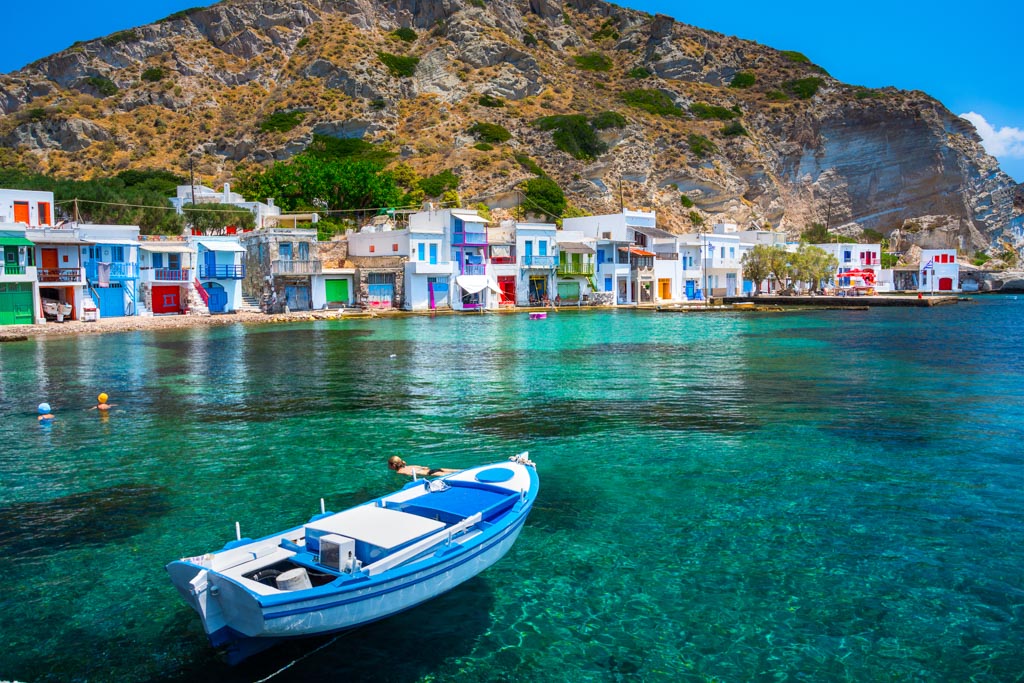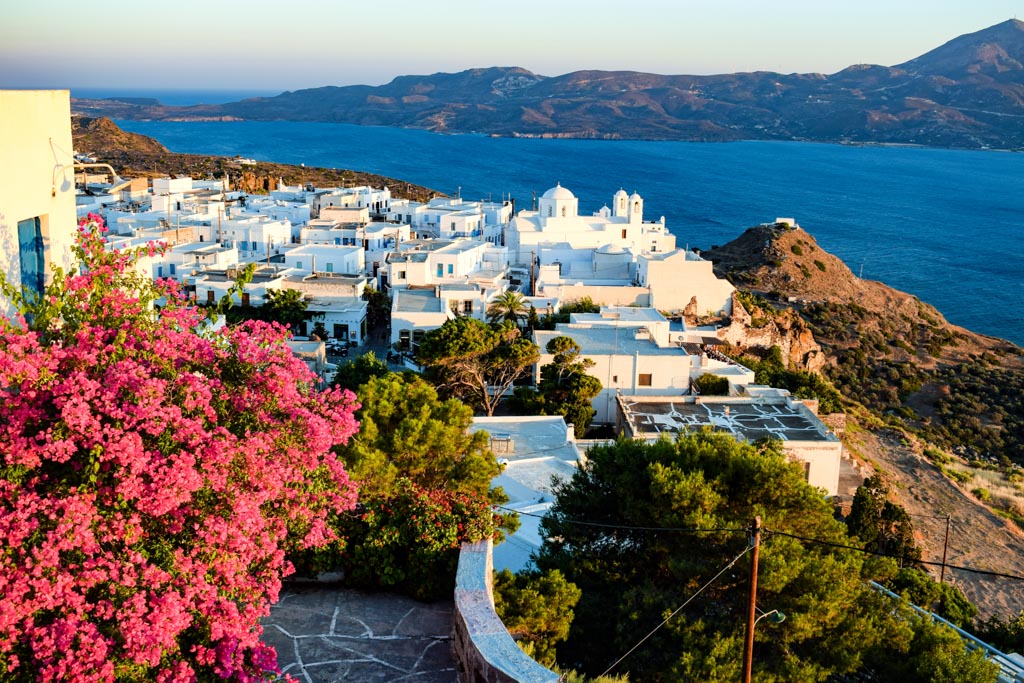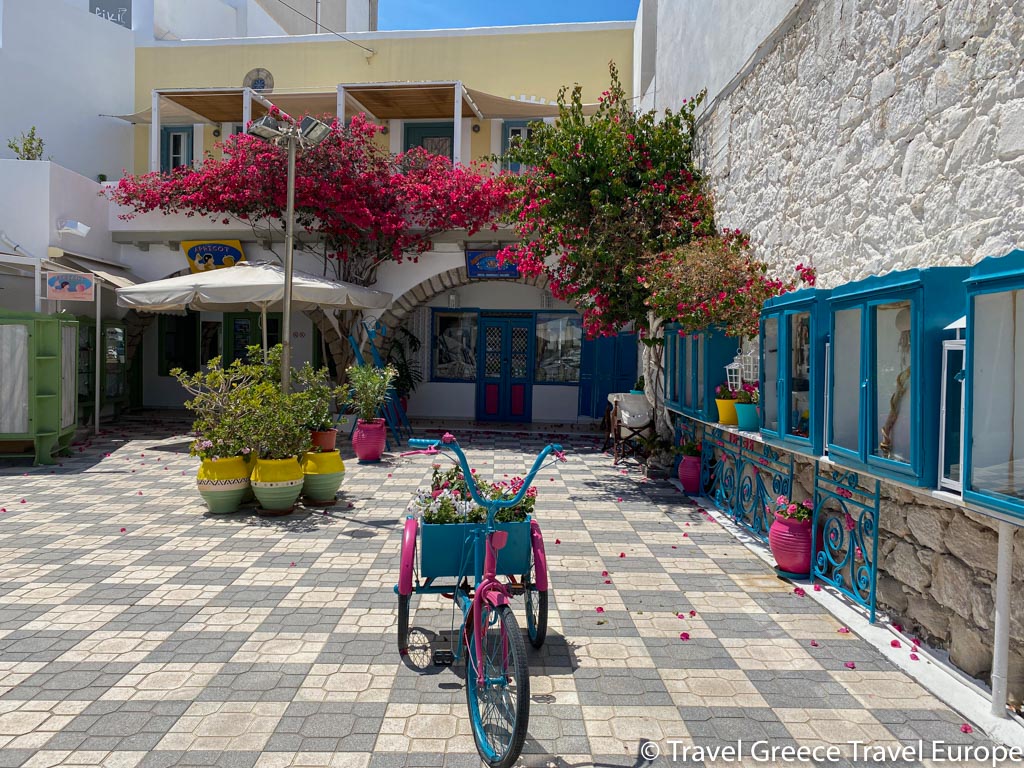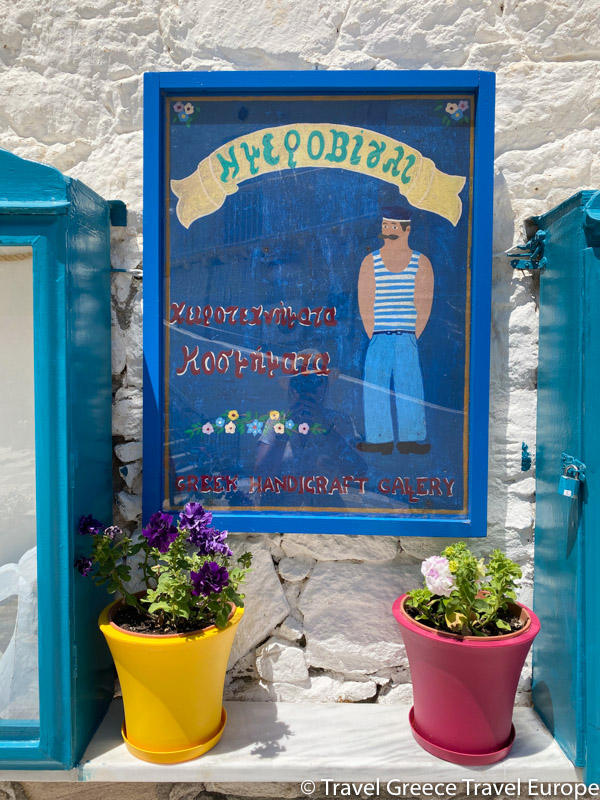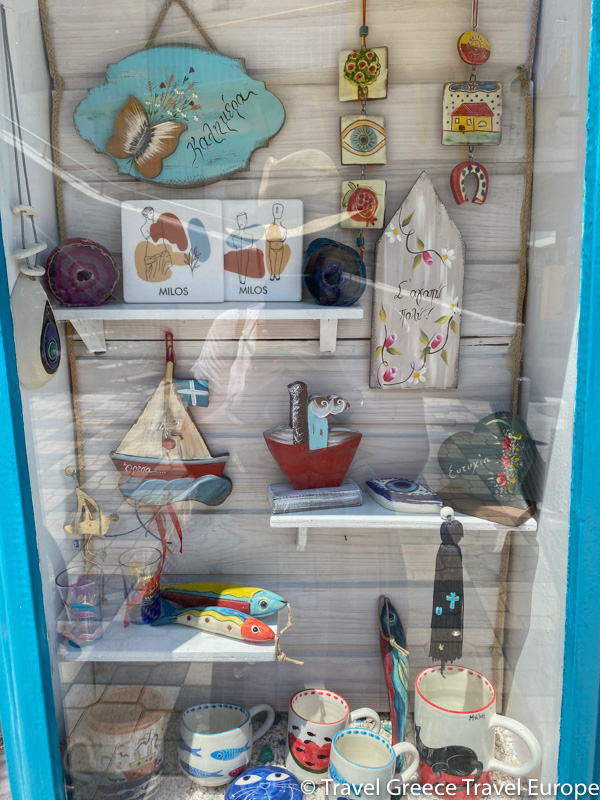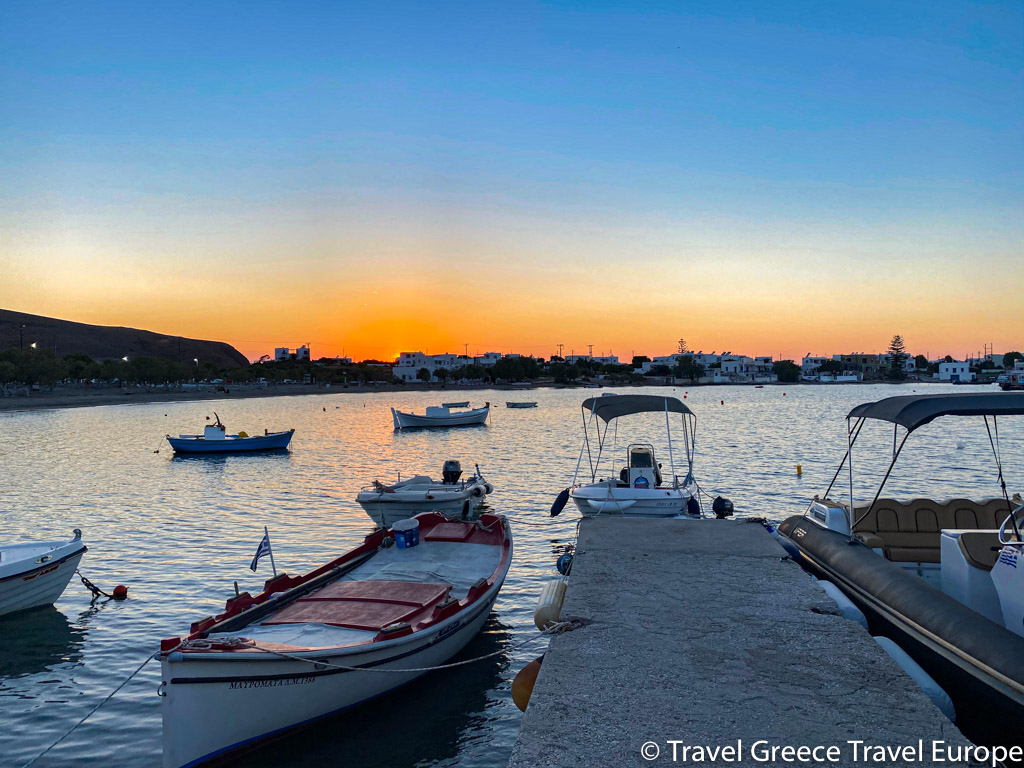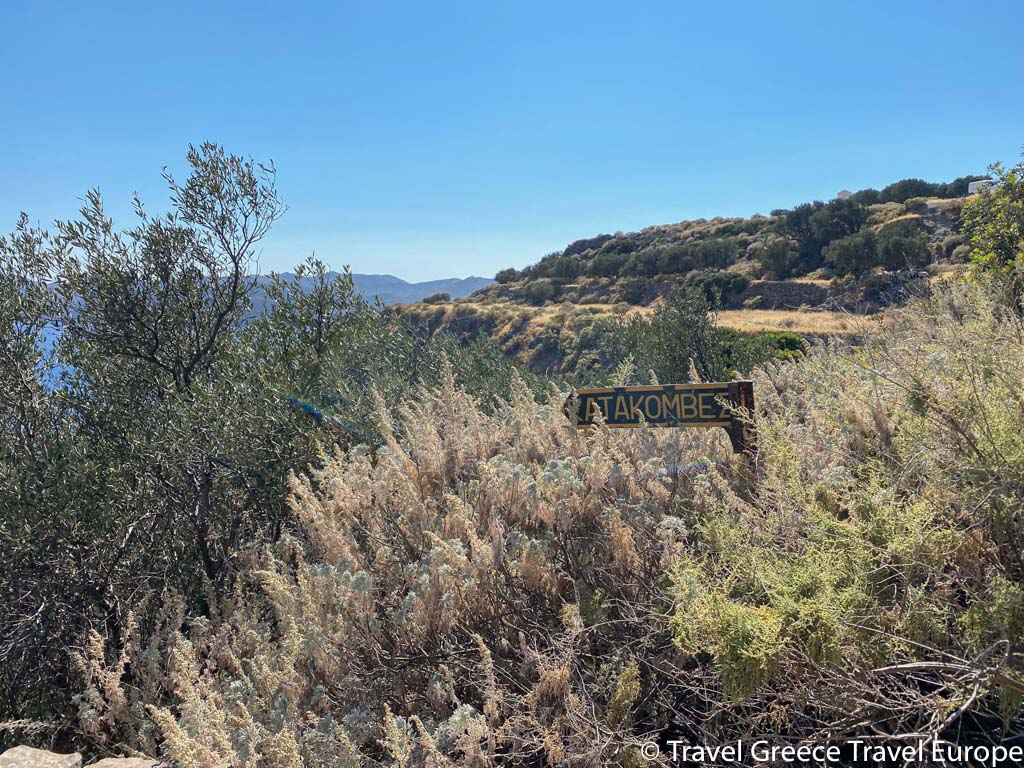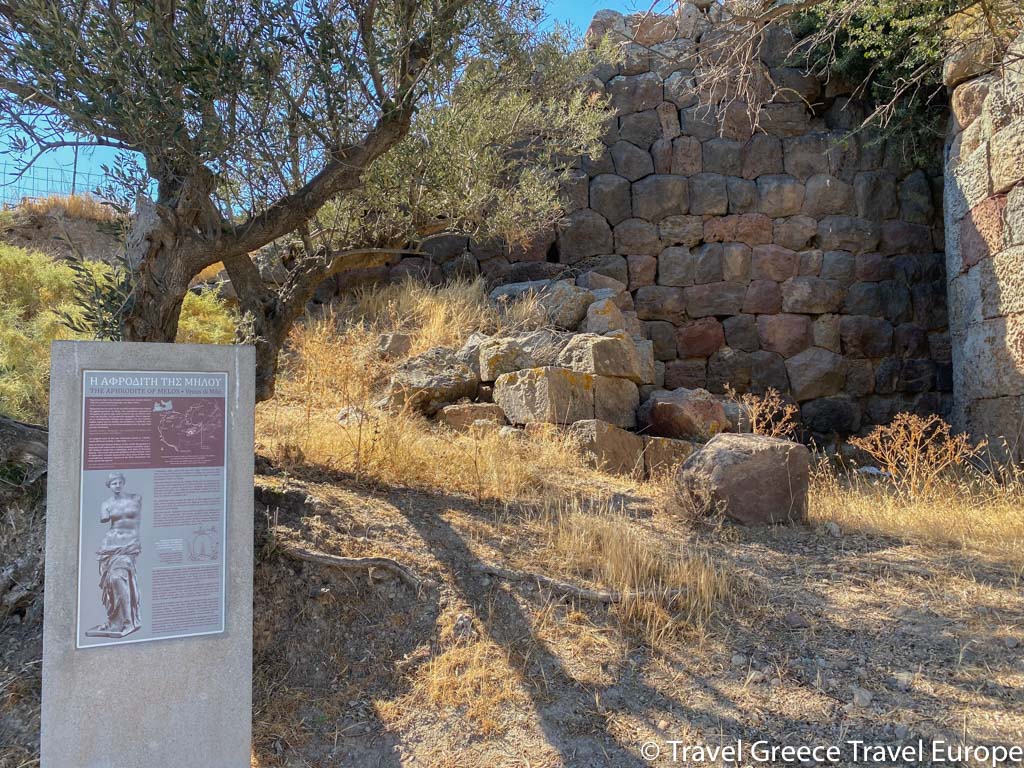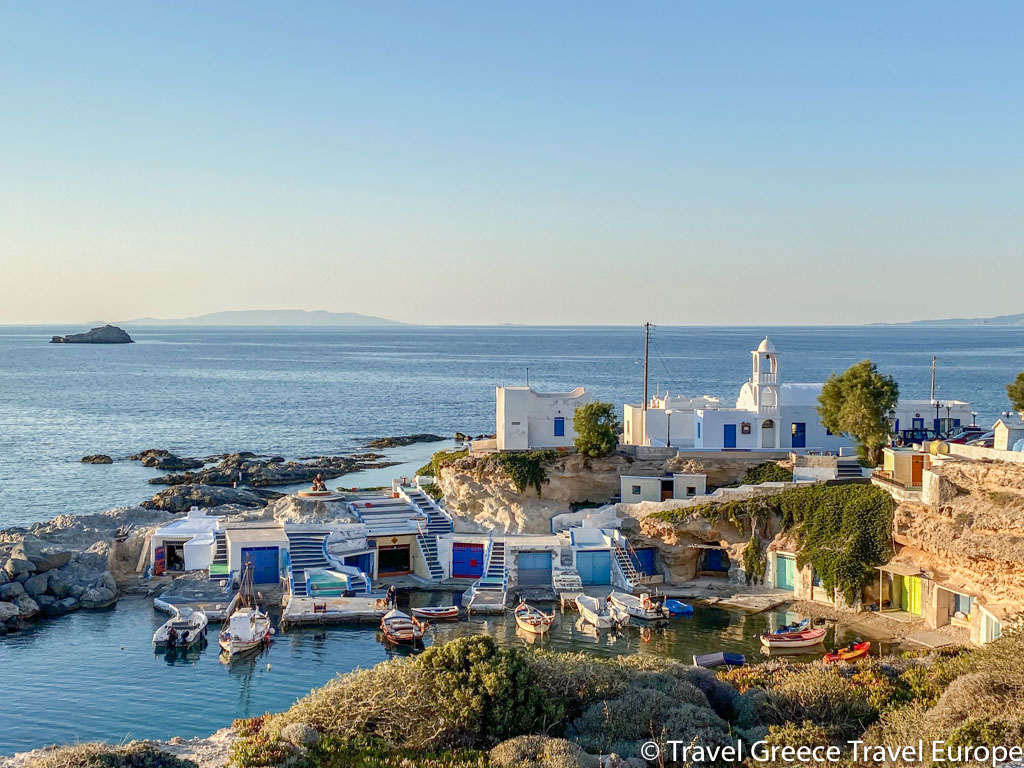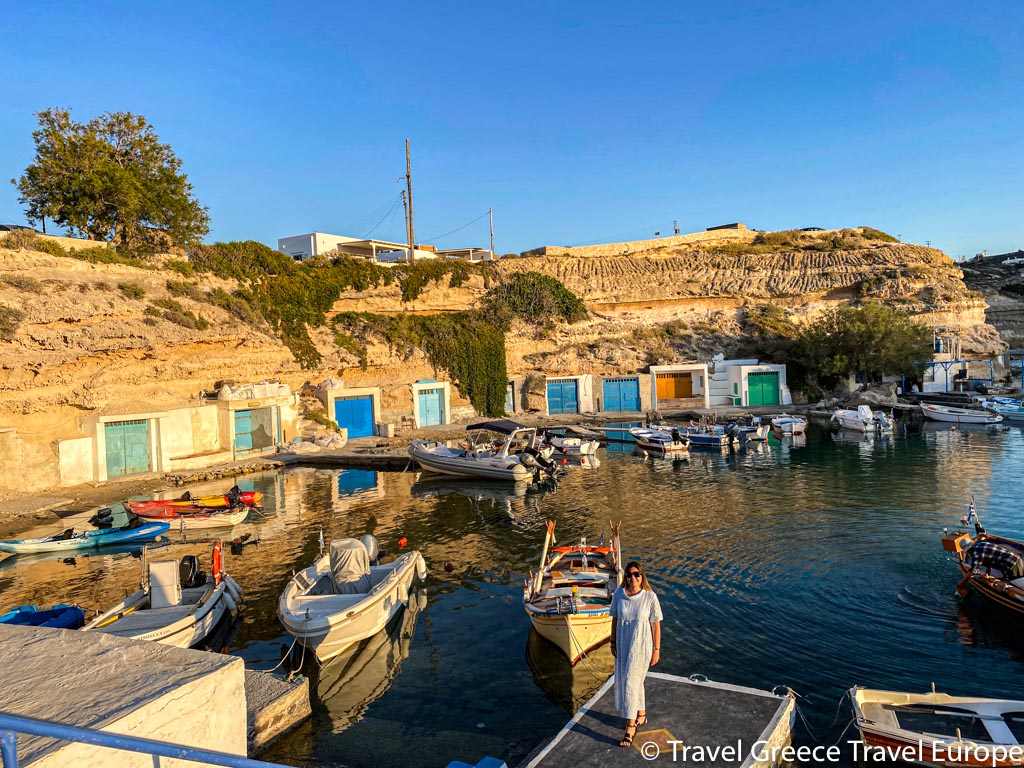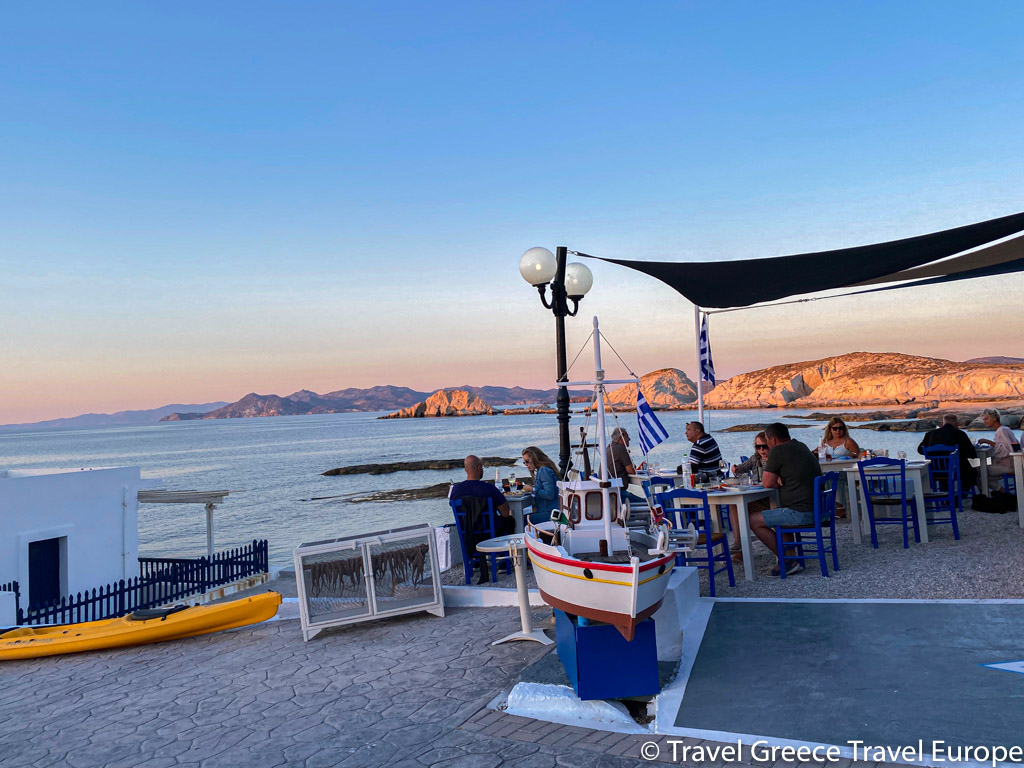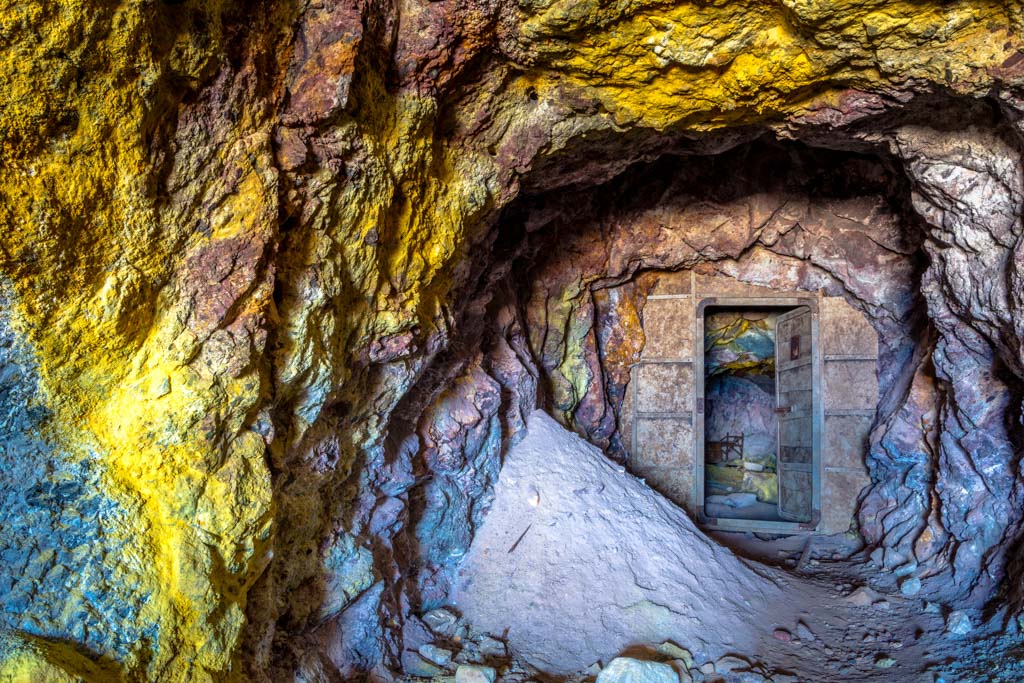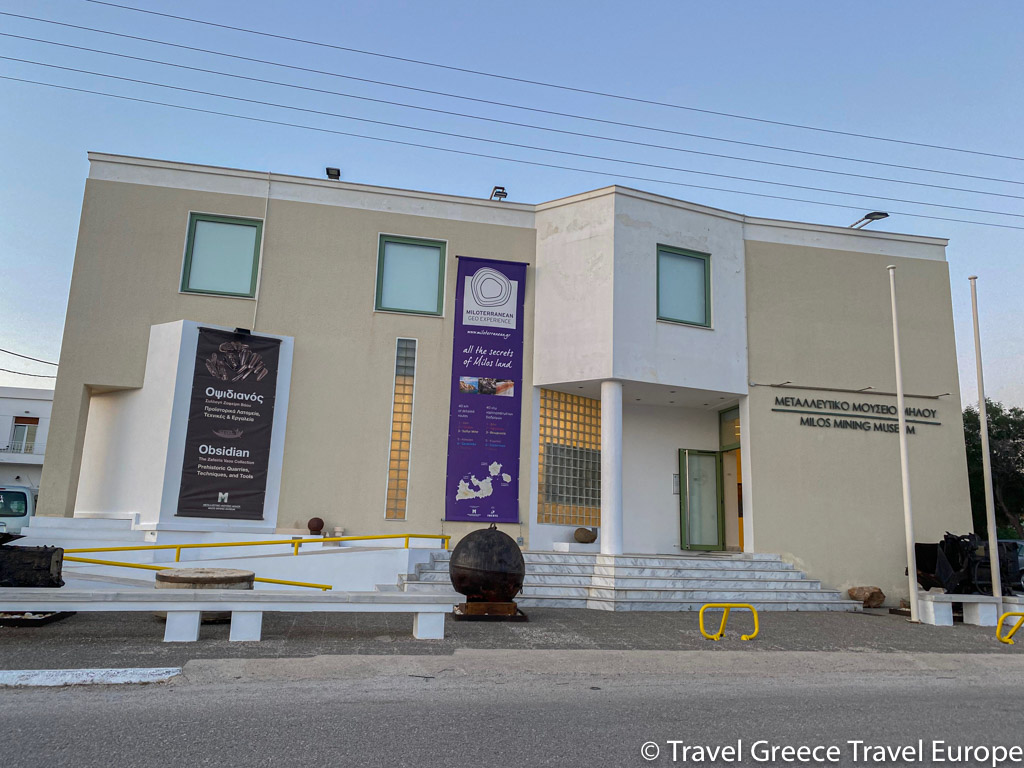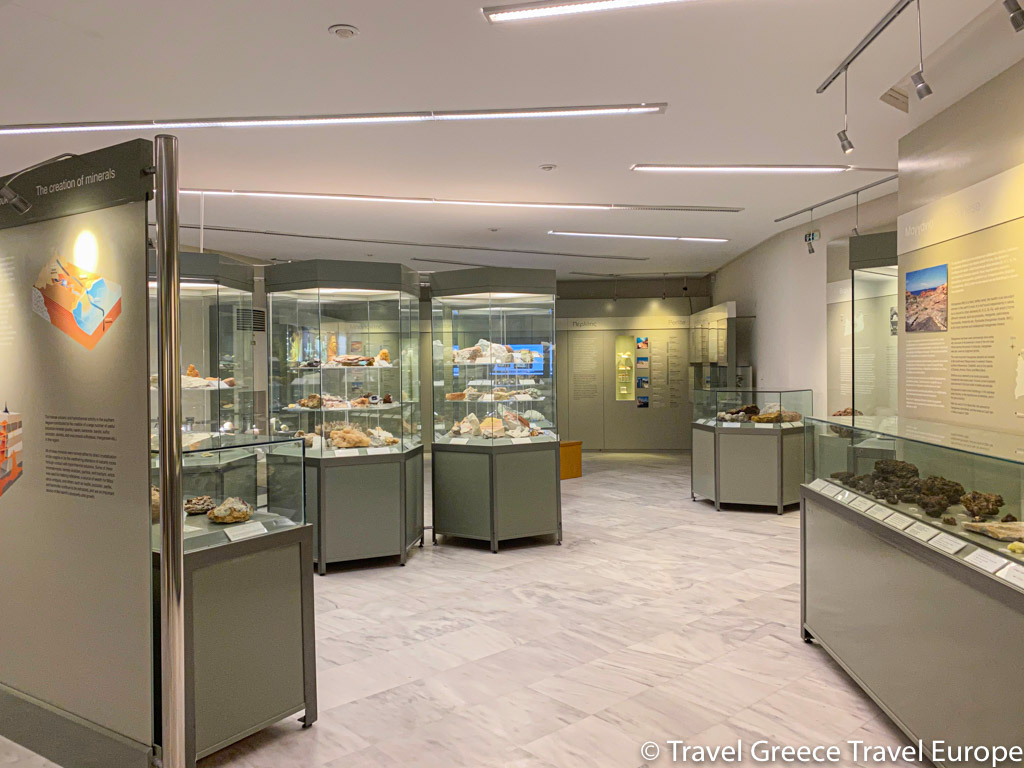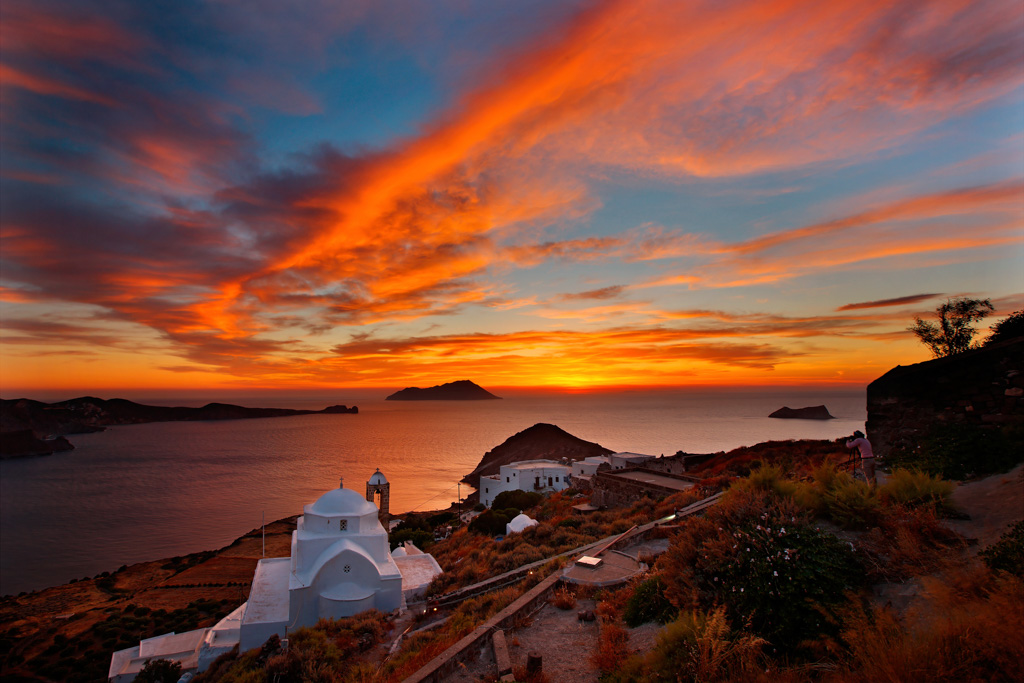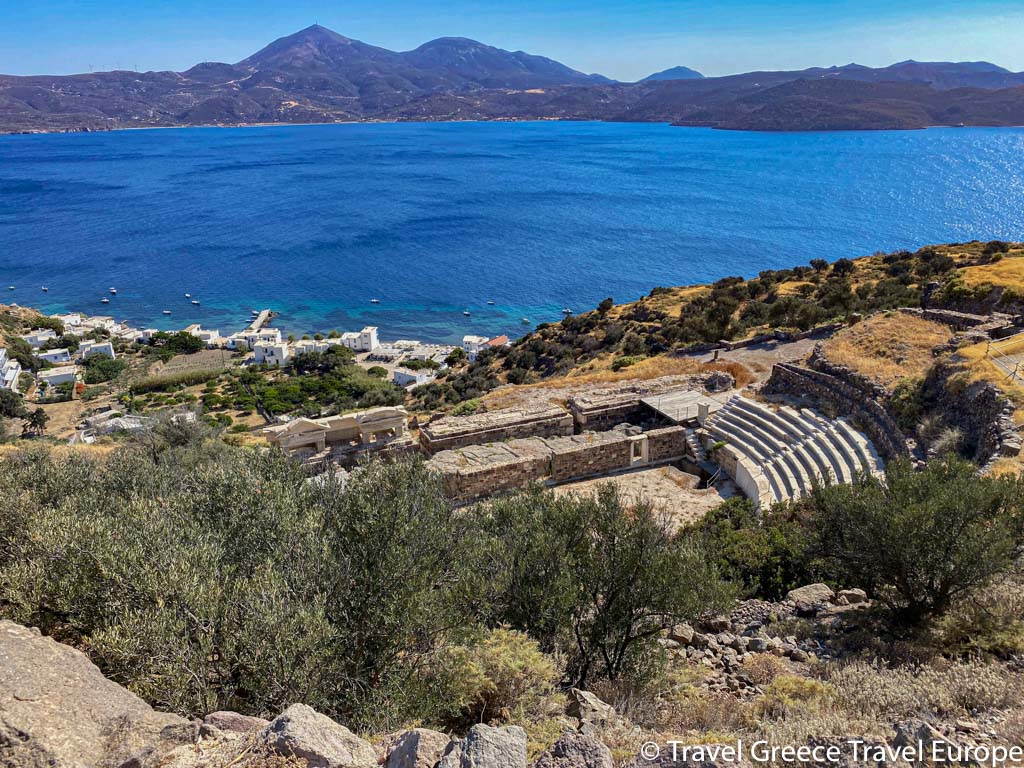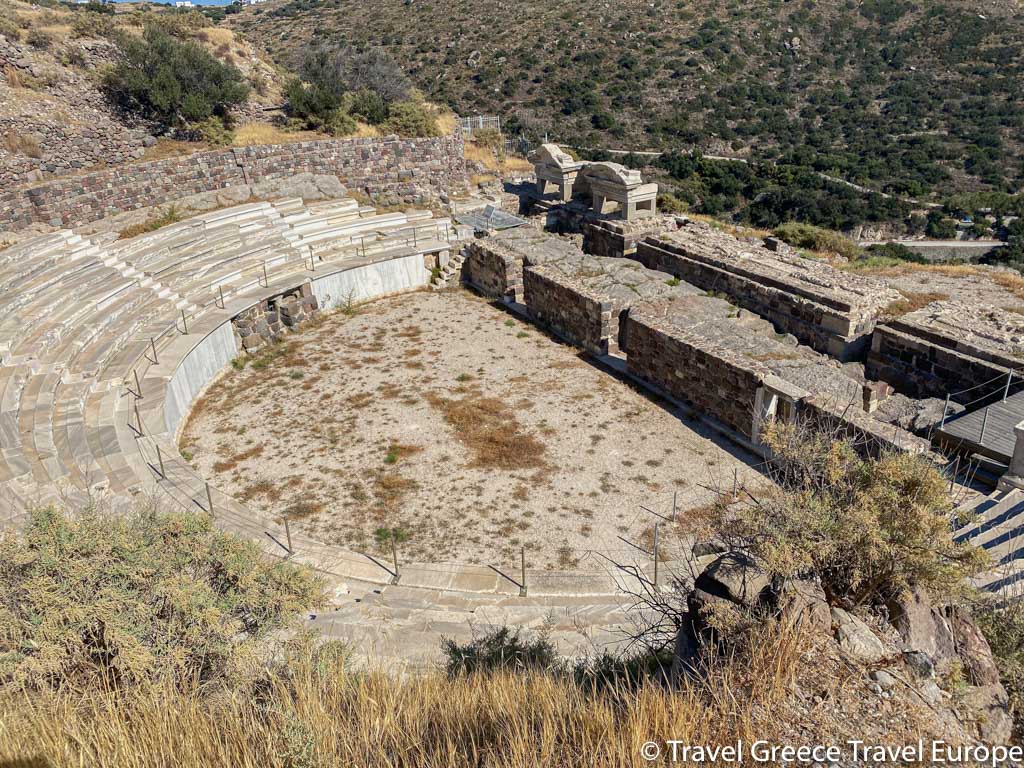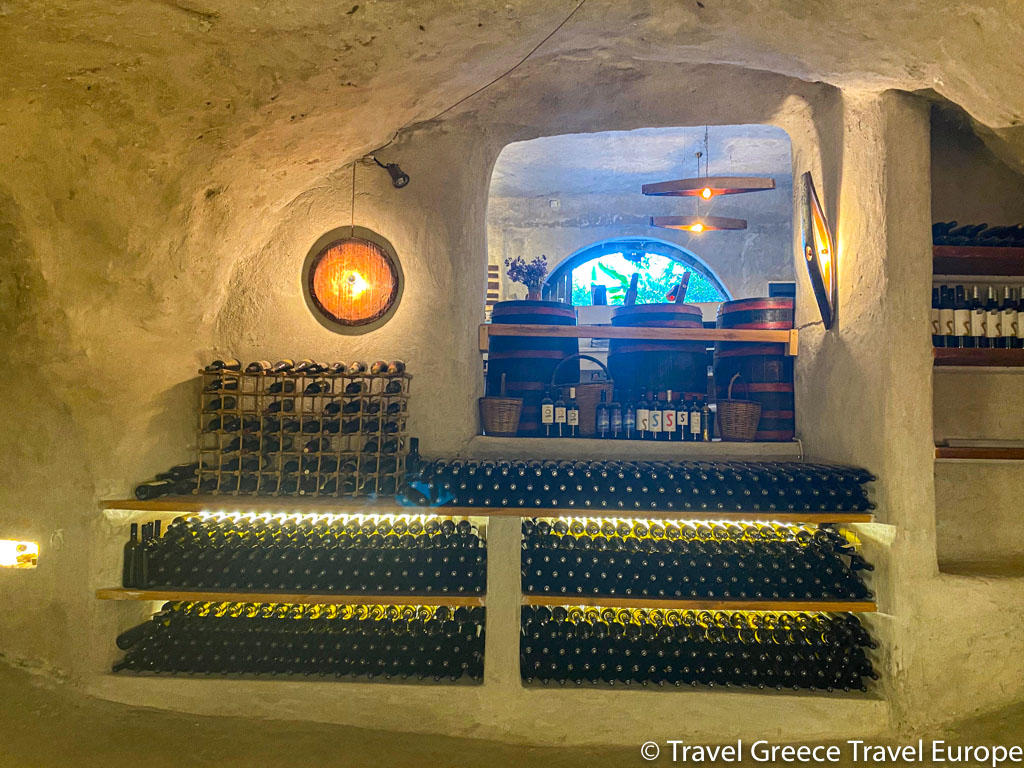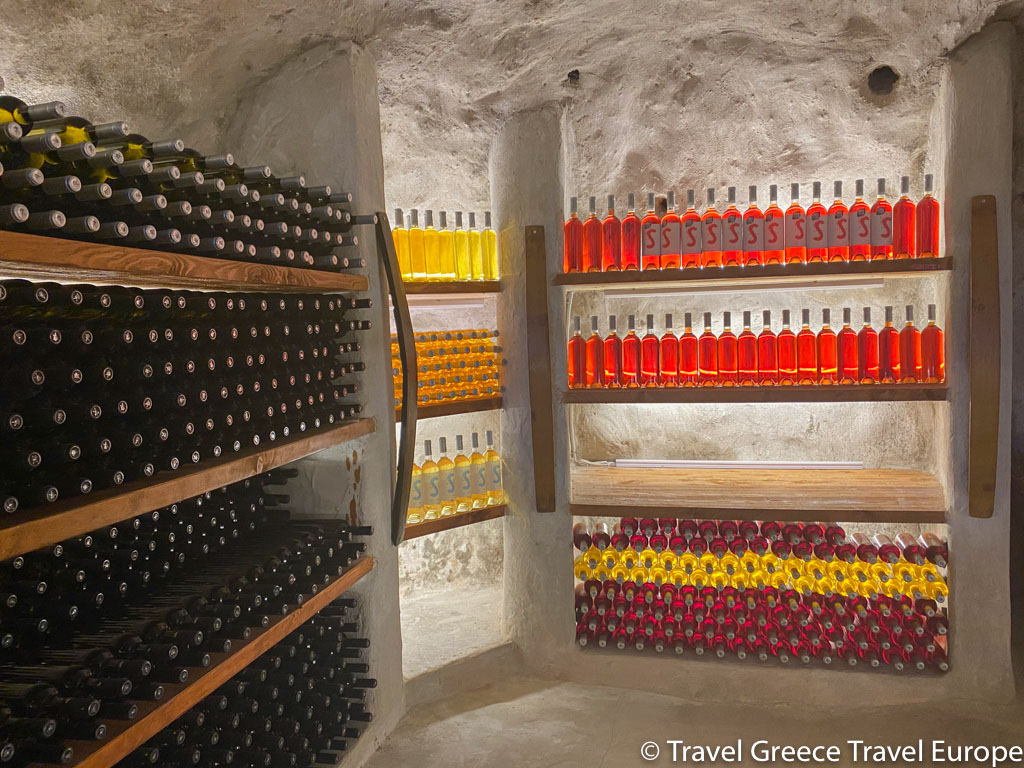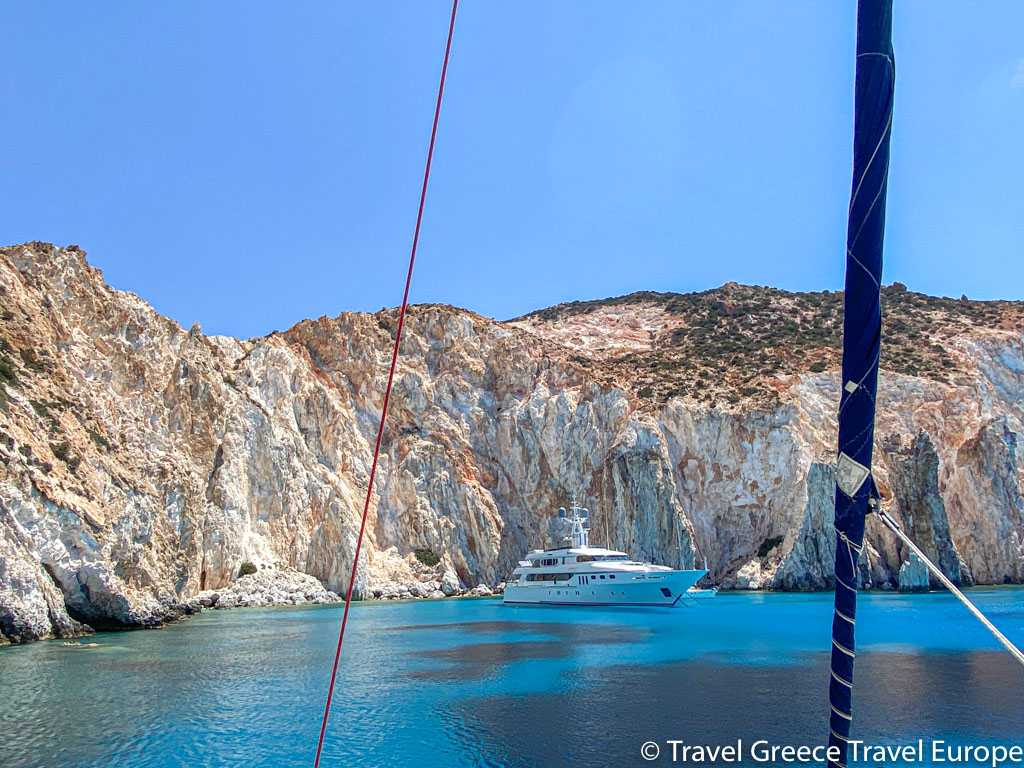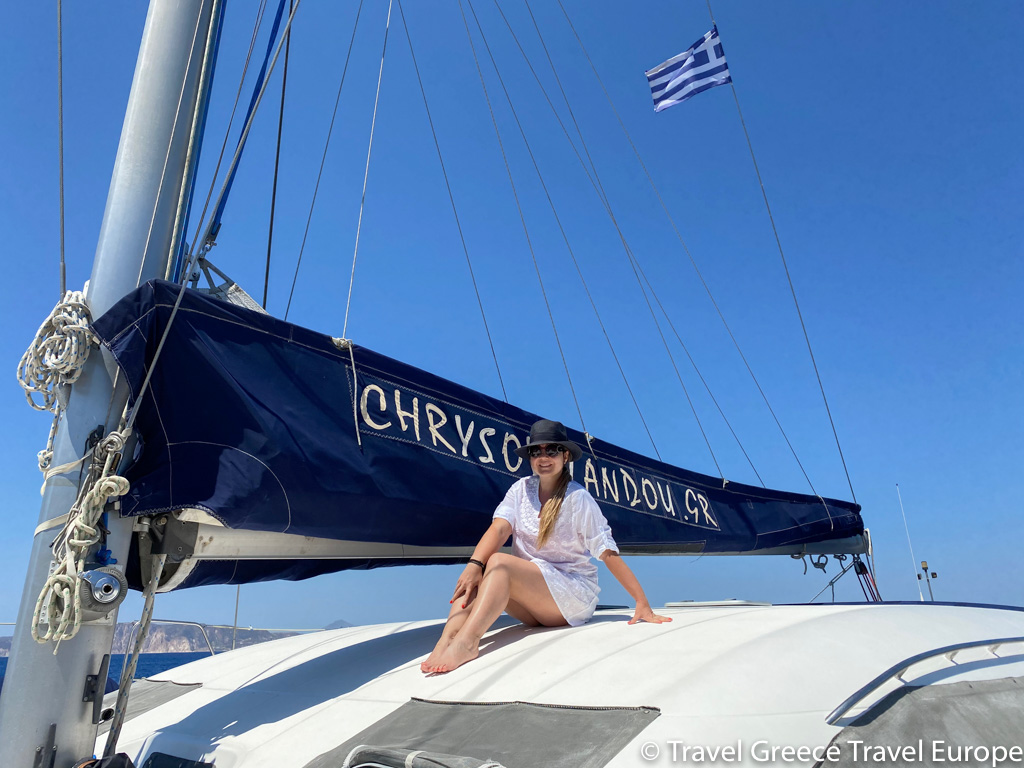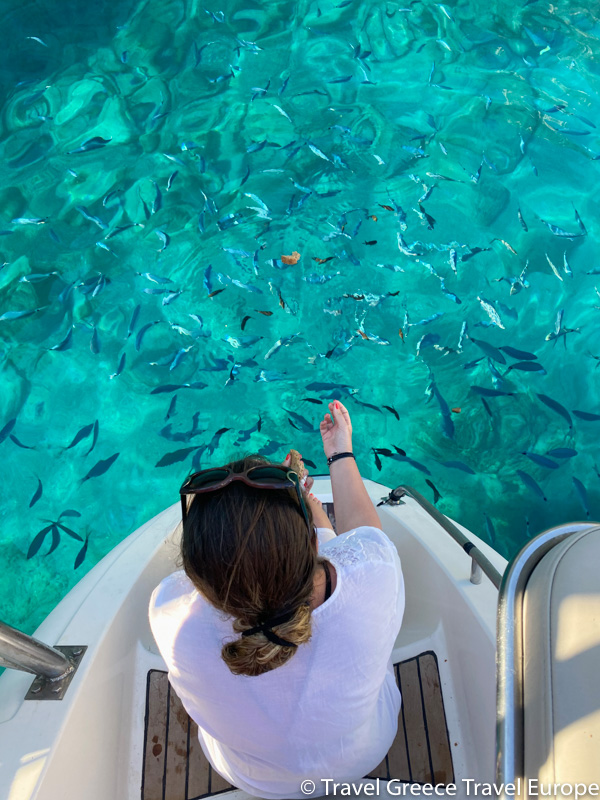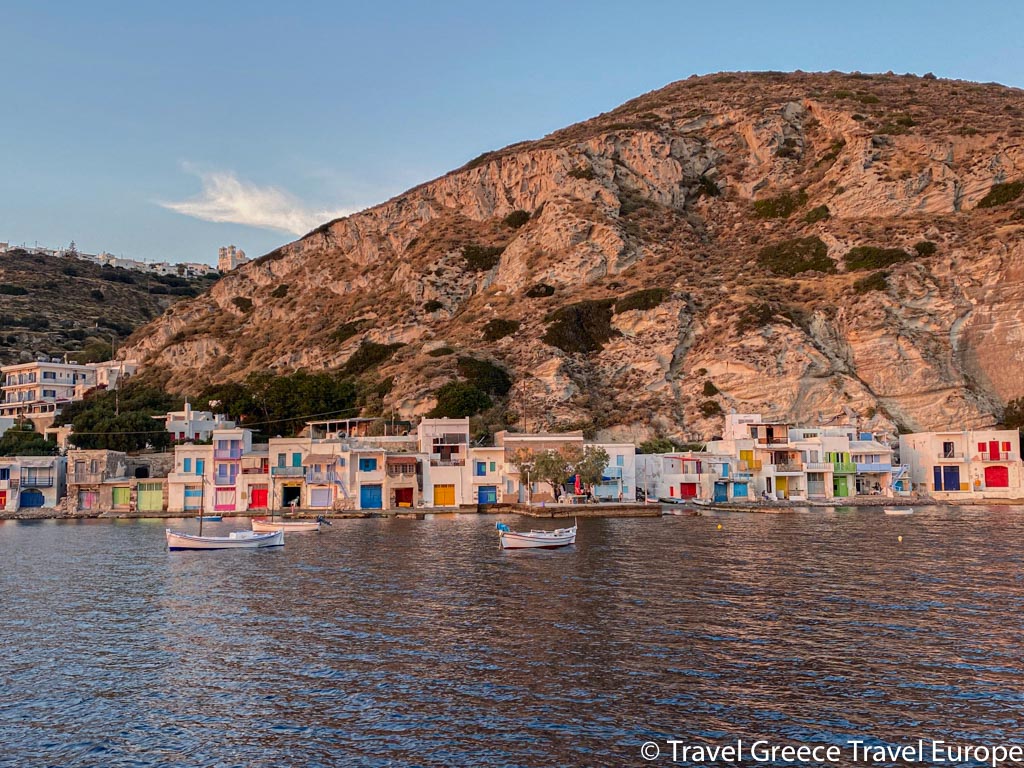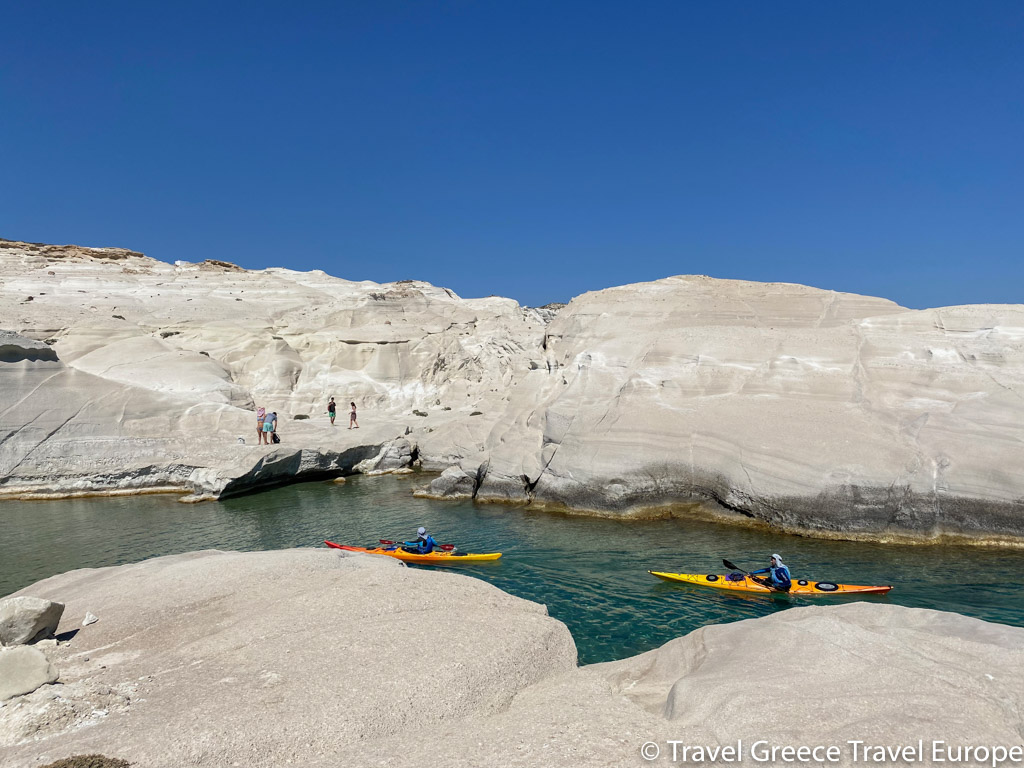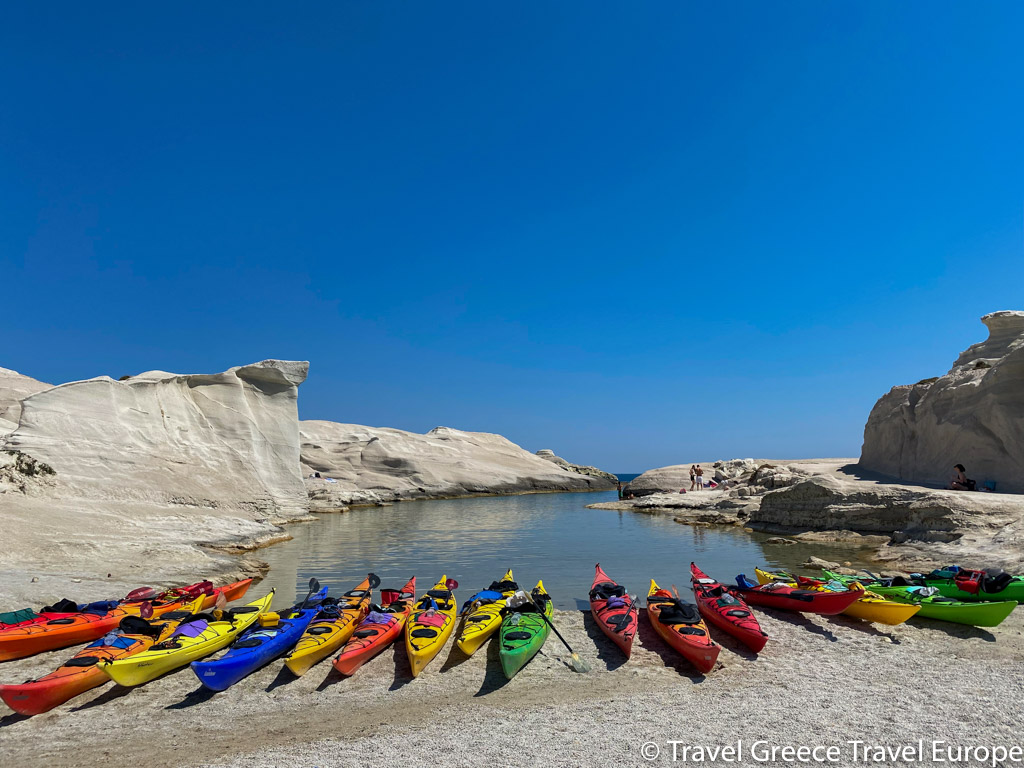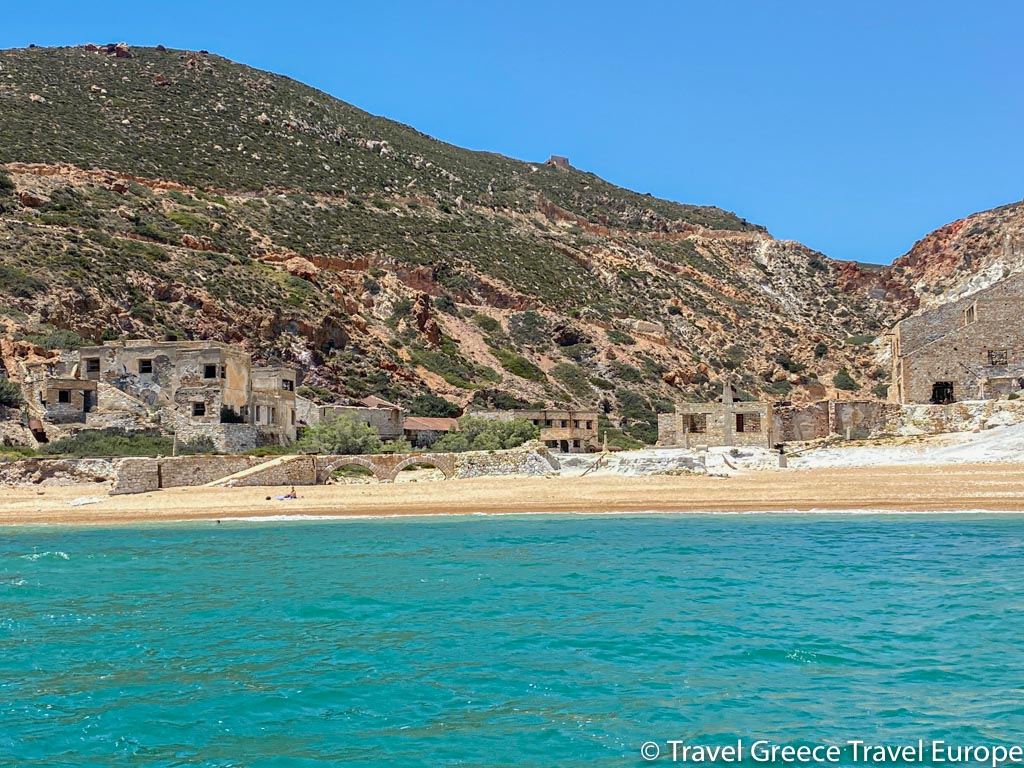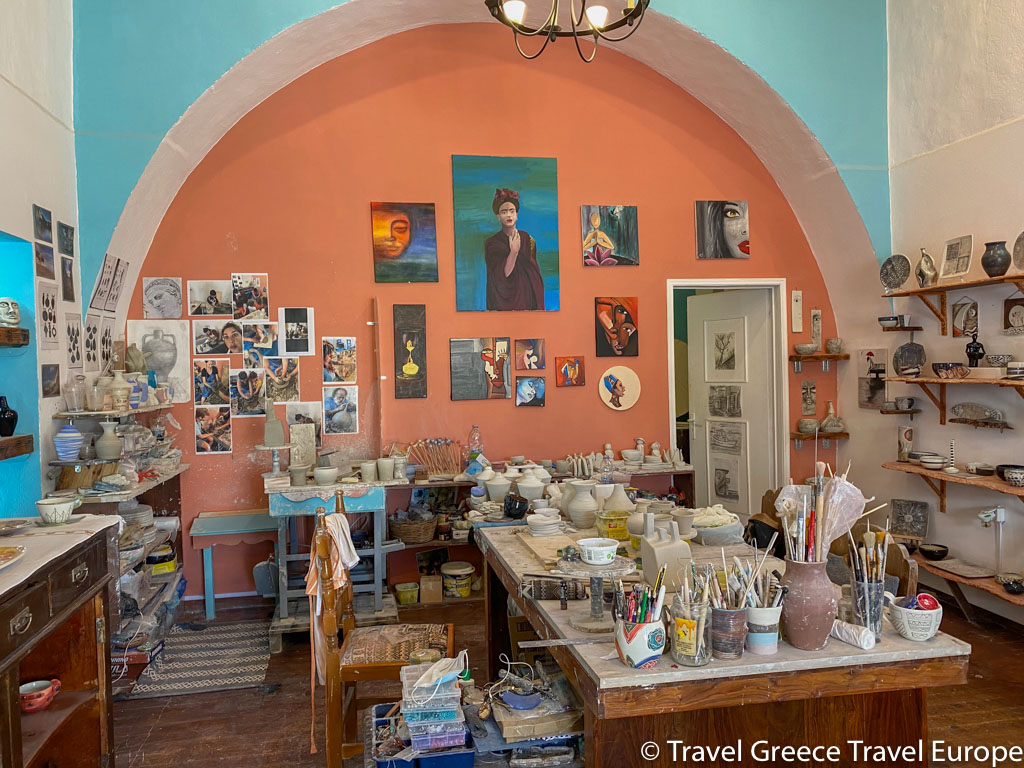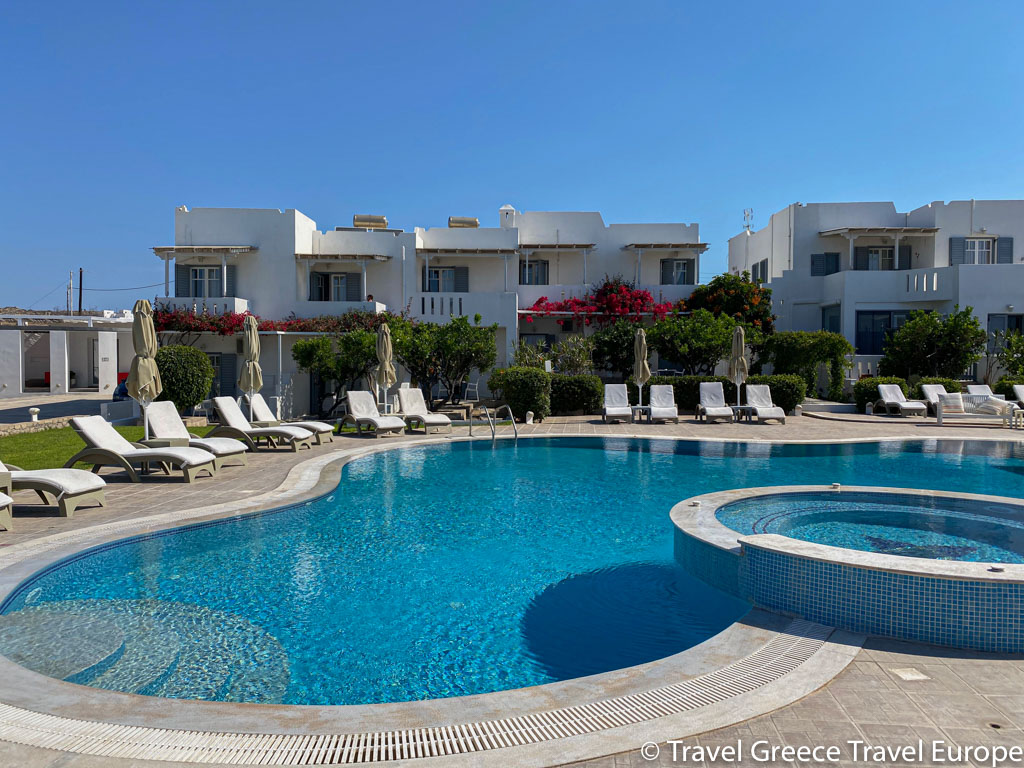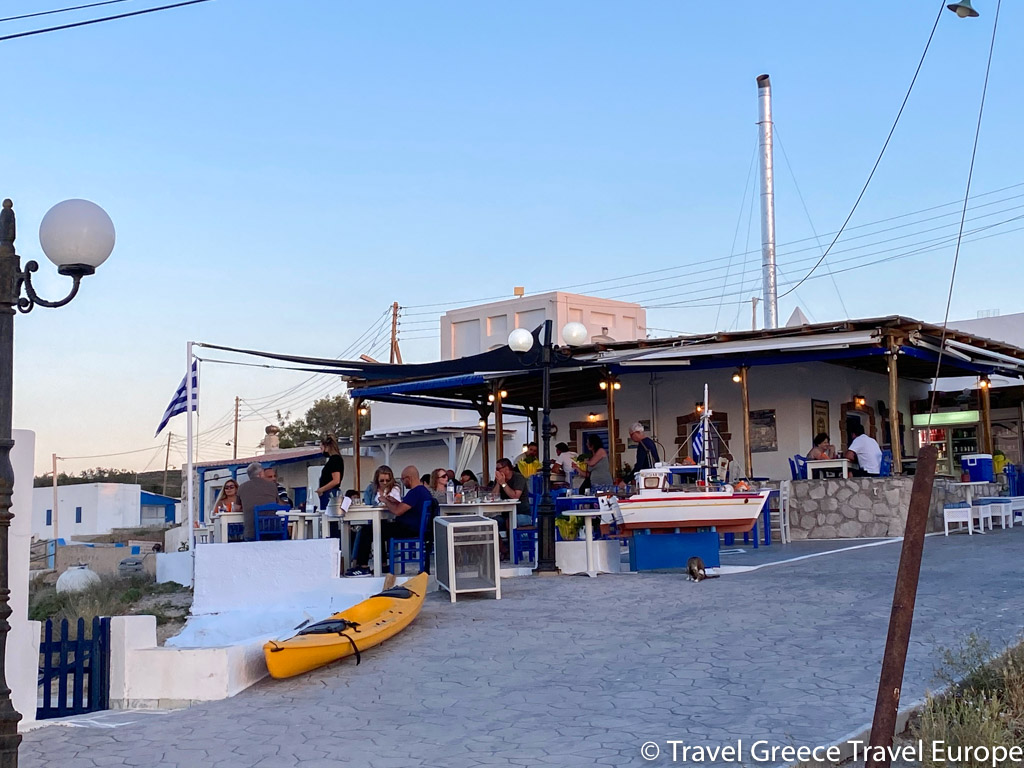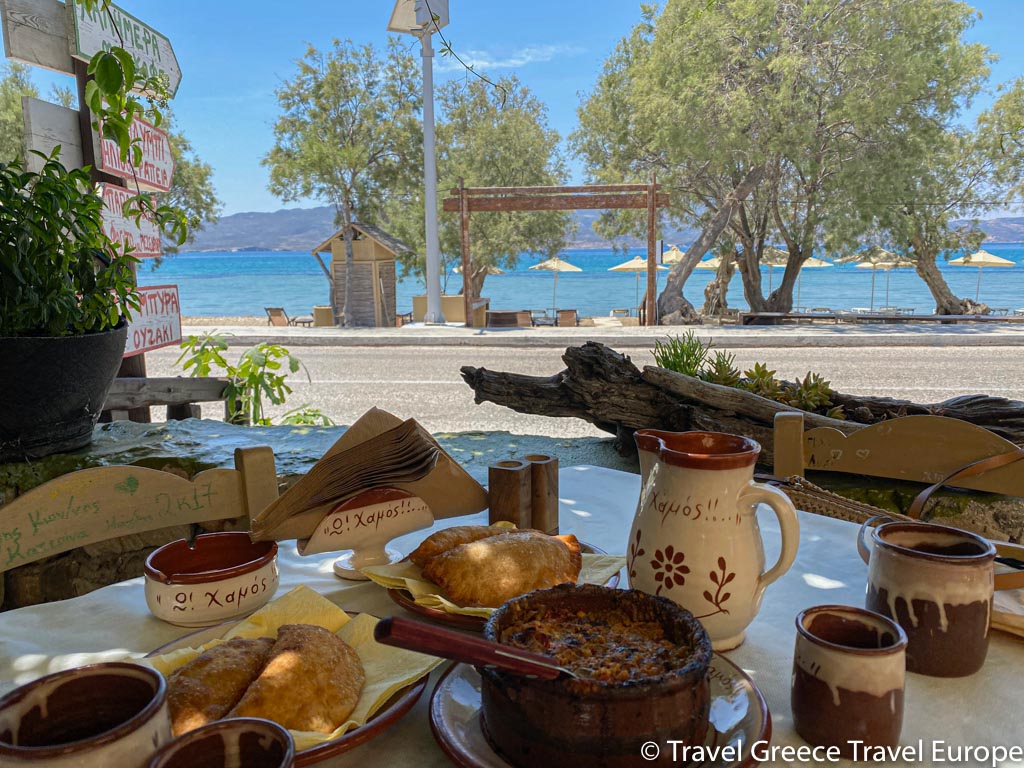Milos, the island of Venus and the once upon a time lesser-known jewel of the Cyclades has now become the newest hotspot in Greece. This stunning island in the Aegean Sea is shaped by its sensational landscape and otherworldly appeal which is the result of the the island’s rich volcanic past.
The beaches here are nothing like you’ve ever seen, the canvas of natural beauty is absolutely astonishing and will surely take your breath away. If you wish to experience one of the most beautiful islands in the Cyclades, here are our 15 reasons to visit Milos.
How to Get to Milos
Milos is connected by a small airport and port which are both located in Adamas. There are regular flights to Milos from Athens and the flight duration last about 25 minutes. Those who wish to fly to Milos from another Greek island will have to connect through Athens.
There are serval ferry companies that connect Milos to the Port of Piraeus, the conventional boats take around 5-7,5 hours and the high speed boats between 2,5-4,5 hours.
Discover our 15 Reasons to Visit Milos
1.The history of Milos
Over the centuries Milos enjoyed a series of developments – evident in the traces of the island’s geological, morphological, historical and cultural activity. There are several legends that describe where the island got its name from. According to Greek mythology, Milos was the son of River Skamandros who colonized the island, following the instructions of the goddess Venus. The three Olympian Goddesses, – Hera, Athena and Aphrodite could simply not resist his charm and this caused a dispute that Paris of Troy was called to judge. The fairest of them all was to receive an apple – that was Aphrodite. In modern day Greek, milo means apple, whereas in ancient Greek it meant sheep. Inside the prehistoric tombs of Phylakopi, other than the funerary gifts, tufts of wool were also discovered – thus confirming that there was trade of wool.
2. Explore the Villages of Milos
The main center of activity on Milos is Adamas, the island’s port town is one of the biggest naturally formed gulfs across the Mediterranean. Here you will find many shops, cafes and restaurants.
The second port of Milos is Pollonia, a small gulf in the north east part of the island from where you can catch a boat to the nearby island of Kimolos. The small colourful tourist village also has a fair share of accommodation, taverns and cafes by the sea. The relaxed vibe of the village is also ideal for families holidaying with kids.
Trypiti has maintained its traditional character and is characterised by its windmills which in the past were used for grinding and have since been converted into lodging. This small village was built over the ruins of the classical town of Klima. One of the most extensive and fertile terrains of the island, Zefyria was first established by the Venetians in the 13th century and soon became the capital of Milos.
At the end of the 18th century following the major volcano irruption on Santorini in 1650 and the massive earthquake of 1738, the village was abandoned as the habitants moved to the area of Kastro (Castle).
3. Visit the Catacombs of Milos
Carved in soft pumice stone, inside the natural caverns, the catacombs of Milos that lie between the villages of Trypiti and the ancient city of Klima, are considered to be the second most important Paleo-Christian monument in the world, after those found in Rome.
The catacombs date from the 1st to the 5th century and are located 150 m above sea level with an explored length of 184 m. The early Christians used these catacombs as burial site and later as a place of worship and refuge. Evidence shows that the first converts to Christianity on the island of Milos were Jews and there was a large Jewish community on the island. It is said that St.Paul encountered a shipwreck in Milos as he was making his way to Athens from Crete.
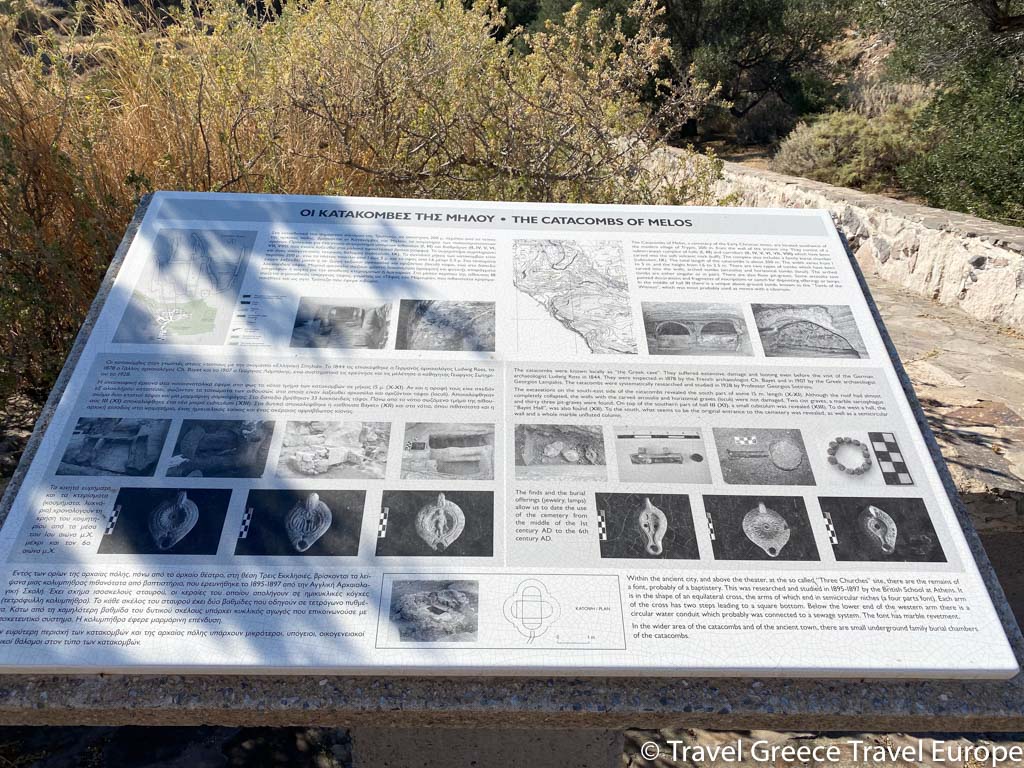 Opening hours: Mon – Sun: 9:00 AM — 6:45 PM, the catacombs are closed on Tuesdays.
Opening hours: Mon – Sun: 9:00 AM — 6:45 PM, the catacombs are closed on Tuesdays.
4. The Famous Aphrodite of Milos
Venus de Milo, the famous statue created in the late Hellenistic period (120BC) is one of the most renowned statues in the world and the one that got Milos its international fame. The statue of the goddess which is depicted half-naked with a cloak wrapped around her thighs, made her the prototype and ideal of feminine beauty.
The statue of Aphrodite was discovered by chance at the beginning of April 1820 by George Kentrotas who was digging the field in the close proximity to the stadium of the ancient city of Melos. After a long journey sailing around the eastern Mediterranean it was offered by the Marquis de la Rivière to the king of France, Louis 18th. Today the original work of the Parian marble, 2.04 meters high is housed in the Louvre Museum in Paris.
In the years that followed, the repeated hunting for antiquities in the area know as niche – where the statue was discovered clearly destroyed any further evidence that existed. By the end of the 19th century the niche was no longer visible and what was left was merely a pile of stones. Today, sadly the precise spot of its discovery is unknown but the remarkable story of this heavenly goddess remains to be an integral part of the island’s history.
5. Enjoy sunset and delicious dinner in Mandrakia
One of the most unique features of Milos are the syrmata, small fishermen dwellings which are most usually carved into the rock walls. The word syro translates as to pull, these syrmata is where the fishermen would pull their boats in, to protect them from the stormy weather. This tradition dates back to the mid-19th century when there was no longer the fear of Turks and the pirates, and thus the fishermen felt safe to take the seas again.
These small two-storey fishermen houses usually had a retreat area on the upper floor where the fisherman could rest, instead of having to walk all the way home. Later when swimming became a common pastime, the families would use these syrmata as weekend accommodation, which were later used as summer residences.
Several notable settlements dot the island of Milos, such as Klima, Mandrakia, Fyropotamos, Mytakas, Ag. Konstantinos, Fourkouvouni, Areti, Skinopi and Pachena.
Mandrakia is located close enough to the island port-town Adamas and to the famous beach of Sarakiniko. Those who follow the whereabouts of celebrities would have spotted Justin and Hailey Bieber vacationing here in the summer of 2021 – when Instagram images of Mandrakia and the Medusa tavern circulated the internet.
For a memorable evening and once-in a lifetime experience we recommend coming here for dinner, just before the sunset. Both the setting and the food is spectacular.
6. Explore the history of mining at the Mining Museum
The city of Phylakopi developed during the Minoan period ( around 3000 BC to 1100BC) as a trade centre of the obsidian, an indigenous rock that is a naturally produced volcanic glass which is formed as a result of volcanic eruption. It was largely used to produce razor sharp stone tools and vessels in Minoan Crete and was considered to be one of the most important pre-historic tool making materials in the Aegean.
The main obsidian areas in the Aegean are the Cyclades and the Dodecanese. On Milos there are two obsidian sources, the Adamas – Nychia and Demenegaki which supplies the prehistoric communities for approximately seven millennia. The oldest obsidian deposit is located at Soros, the southern Antiparos. The Milos Mining Museum is located in Adamas, the main port-town of Milos, and was first established in 1998. It is a wonderful destination to discover and learn all about the 11,000 years of the island’s mining history.
The museum displays a rich collection of mineral and natural wealth as well as walks the visitor through the extraction process which has been applied since the Neolithic Age.
7. Climb up to the Kastro in Plaka – the capital of Milos
During the 18th century a rise in serious illnesses in the area of the Old Chora which was Zefyria, the settlers were forced to relocate to the Castle which in turn became the capital of Milos. As the population started to rapidly increase, new villages were formed around Plaka, Triovasaloi, Trypiti and Plakes.
Plaka, the charming capital of Milos, with its narrow alleyways that were built for protection against pirate attacks – is also known to be a beautiful sunset spot. If you stamina allows it, do make your way up to the highest point of the Kastro (Castle) that crowns the very tip of the settlement at the height of 280 m. The view from here is astonishing.
In the 13th century, the Cyclades and the Aegean were dominated by the Venetian family Sanoudoi, they were the first to inhabit the castle and used it as a stronghold against pirates’ attacks.
8. Visit the Archaeological Museum in Plaka
Housed in a Neoclassical building constructed by the famous German architect Ernst Ziller, the Archaeological Museum in Plaka houses exhibits from the prehistoric to Roman era. Some of the most notable artefacts found in the museum are the mould of the infamous Aphrodite, the tablets depicting the alphabet of Milos from the 5th century B.C, a model of the town Phylakopi, the “Lady or Kyra of Phylakopi” – a ceramic mother goddess, replica of a boat and the obsidian collection.
Visiting hours
Tuesday, Thursday closed
Monday, Wednesday Friday 08:30-15:30
Saturday, Sunday 08:30-15:30
9. Admire the Ancient Theatre
The ancient city of Melos dominated a highly advantageous strategic position and was once the island’s main center of population. Its lifespan lasted from the 9th/8th century B.C to the 6th/7th century AD during which it encountered periods of great prosperity.
The site of the ancient theatre was first discovered in 1735 by a Jesuit monk Nicolas Sarrabat who was travelling through the area. The first excavations started in 1816 and 1817 by the German architect Carl Haller von Hallerstein, who later bought the theatre on behalf of the heir to the throne and later king of Bavaria, Ludwig I who in turn gave it to his son Otto, the king of Greece.
The most recent excavations that took place were conducted by the Ephorate of Antiquities for the Cyclades in 1990-1995 and 2010-2015, these have revealed the side entrance at the western retaining wall, the orchestra arena and the greater part of the remains of the scene building.
The marble theatre which is in an excellent condition and one of the best preserved ancient theatres of the Cyclades which can be admired by visitors to this day, was constructed on a hillside above the ancient harbor, which is the modern village of Klima. The theatre is a sumptuous work of the Roman period (1st-4th century AD) and from evidence it shows that its construction lasted a long time with possible intervals of redesign. The theatre represents a fine example of a theatrical structure with features corresponding to those of the Roman and the Romanized theatres of the eastern provinces of the Roman times.
The admission to the theatre is free
10. Wine Tasting at Kostantakis Cave Winery
Milos unlike some other Greek islands does not boast a verdant and rich wine history, yet here one can find a delightful family-run traditional cave winery tucked away in the marvellous northern region of Pollonia. For decades Kostas Mallis (Kostantakis) has cultivated and vinified local Cycladic grape varieties. In 2012 he further enriched and extended his family vineyard, planting only indigenous Greek varieties that produce fantastic wines with Assyrtiko, Savatiano, Monemvasia, Roditis, Muscat white, Mandilaria and Mavrotragano.
The cave winery is open daily from 17:00 – 21:00 PM.
Tel: +306936644481
E-mail: winerymilos@gmail.com
11. Spend the Day Sailing Around Milos and follow the route of the Pirates
The favourable geographical position of Milos right on the crossroads between the east and the west was once an important naval base of the pirates in the Aegean. The cosmopolitan port of the Old Chora (Zefyria), the numerous coves like Sarakiniko and Kleftiko and the safe harbor of Pollonia offered shelter to these adventurous masters of the seas.
- Polyaigos
One of the top reasons to visit Milos is without a doubt its connection to the spectacular water activities and spending a day sailing the pirates route will be by far your most memorable activity. There are several boat company and routes that take you around Milos and to the far-away places that can only be reached by boat.
The full day sailing cruise with lunch takes you all the way to Polyiagos (the island of the many goats), and continues the journey passing by Paliorema where you can spot the installations of the old sulphur mines, continuing towards Kleftiko, a once famous pirate den where you will witness the most impressive landscapes of Milos.
At sunset you will sail along Klima and marvel at the colourful fishermen dwellings – a truly wonderful sight to behold. Book your sailing experience here.
12. Swim at the Moon-like Sarakiniko Beach
This famous moonscape of Milos with the most glorious whitewashed rocks that glitter like sparkling diamonds with the sun’s reflections is dotted with numerous pirate’s caves and soaring cliffs ideal for diving.
Enjoy the spectacular scenery of Sarakiniko beach on a sea kayaking adventure or simply come here to sunbathe on the smooth rock formations. This is a natural beach therefore there are no sunbeds or umbrellas, there is a canteen available in the parking area that sells refreshments and light snacks.
13. Enjoy the therapeutic benefits of the Hot Springs
As a result of the centuries of volcanic activity on the island, Milos is blessed with many hot springs which since ancient times were known for their exceptional healing properties.
There are a number of hot springs that dot the island’s diverse landscape. On the beaches like Alikes, Provatas, Skinopi, Paliochori, Tria Pigadia, Kanava there are dedicated spots with hot springs. From the fumaroles, the hot sulphurous gases emerge and the warm water temperature allows you to enjoy swimming all year round.
14. Go Hiking
The astonishing landscape of Milos makes it a wonderful destination for hiking enthusiasts. There are several marked trails which are fairly easy to follow and relatively short. The hiking routes of Milos are scattered across the island. Some of the most popular hiking routes are:
- Trypiti – Catacombs – Ancient theatre – Profitis Ilias – Venus of Milos (2.5 km / 45 minutes)
- Trypiti – Catacombs – Milos theatre – Klima village (2.5 km / 45 minutes)
- Zefyria – Agia Kyriaki beach (5 km / 2 hours)
- Cape Vani – is located 25 km from Adamas and a dirt road covers most of the route. Leave the car at the point that the dirt road which leads to Agkathia beach intersects a smaller dirt road that leads to Vani. After a 40 minute walk you will reach the old manganese mines passing lush green surroundings with juniper forest. (3 km/40 minutes )
Maps with detailed routes are available for purchase at the gift shop of the mining museum in Adamas or in local kiosks or bookstores.
15. Join a pottery workshop
While holidaying on Milos how about refining your artistic skills? At the House of Clay located in Adamas you can learn all about the value of ceramic art in ancient Greece and learn how to make your own pottery. The courses are ideal for families and groups, and no special knowledge is required. The duration of the course is two hours and is arranged upon request. The art studio is also a perfect place to purchase some unique gifts for you to bring back home.
Tel +3022870 22431
E-mail: thehomeofclay@yahoo.gr
Where to Stay in Milos
Milos is an island which is not known for large-size resorts, but rather offers visitors a selection of smaller family-owned studios and boutique accommodation. The port-town of Adamas offers a variety of smaller properties and its location is a convenient base in order to explore the island.
Santa Maria Village Resort and Spa
This family-owned 4 star hotel perched on a hill overlooking the Aegean Sea is conveniently located, just a few minutes from Adamas. The accommodation consists of several two storey buildings which are built around a well-kept garden offering harmony and relaxation to the guests. The comfortable rooms are decorated in light colours, inspired by the aesthetics of the Cyclades islands. The resort features a main pool and spa facilities. Breakfast is served in a relaxing, shaded area surrounded by olive trees. There is a path that leads all the way from the resort to the main waterfront street of Adamas, very convenient for guests who prefer walking to town. For availability and rates click here.
Where to Eat in Milos
The Melian culinary traditions go back to the ancient times, relying solely on the goods produced on the island and enriched by the flavours brought by travelers. The surrounding sea offers freshly caught fish and other delightful treasures which are served in many of the family-owned tavernas scattered around the island. It is almost hard to have a very bad meal in Greece, but here are some of our favourites which we tried and loved.
Medusa (Mandrakia)
This is a true gem, located in the village of Mandrakia right next to the fisherman’s dwellings this small taverna with the most spectacular view is a quintessential Greek experience. Tables are limited and no reservations are accepted. Try the delicious octopus, smoked eel served with fava, tomato fritters and swordfish souvlaki.
Tip: most taverna’s in Greece serve shrimp in their shell, don’t be surprised if you are require to peel the shrimp.
Oh! Hamos!! (Adamas)
Anyone you ask, will point you in the direction of Oh!Hamos! – which translates from Greek as chaos. This is by far one of the best restaurants to enjoy traditional Melian cuisine and surely one of the top reasons to visit Milos.
The meat served at the restaurant comes from the owner’s farm and the vegetables are sourced from Micheko’s garden. Cheese too is made at the family’s traditional cheese factory – everything you eat here is made and served with love.
Try the dishes cooked in clay pots and the amazing pies. The beach in front of the taverna is an ideal place to start your morning, where you can enjoy freshly brewed coffee, fresh juice and Melian breakfast with a fantastic view.
Nostos Seafood Experience (Adamas)
Located right on the waterfront of Adamas, this modern restaurant serves seafood dishes prepared using locally sourced products. A beautiful minimalistic space, with stunning sea views and excellent service. If you are looking for a more refined dining experience, Nostos Seafood experience is an excellent choice. The salmon ceviche is highly recommended, so is the octopus served on top of fava.
Mikros Apoplous (Adamas)
Set on the waterfront of the Adamas port this tavern is great choice for a relaxing dinner. The menu consists of fresh seafood options, grilled fish, ceviche, fish carpaccio and pasta with seafood or lobster.
Yialos (Pollonia)
A Mediterranean restaurant located right by the sea in the village of Pollonia, offering great sunset view. This restaurants takes a more-modern approach to local dishes and the menu consists of a wide selection of fresh fish as well as meat dishes.
We hope that our reasons to visit Milos will inspire you to book a trip soon. Have you been to Milos? If yes let us know what you liked best in the comments below.

